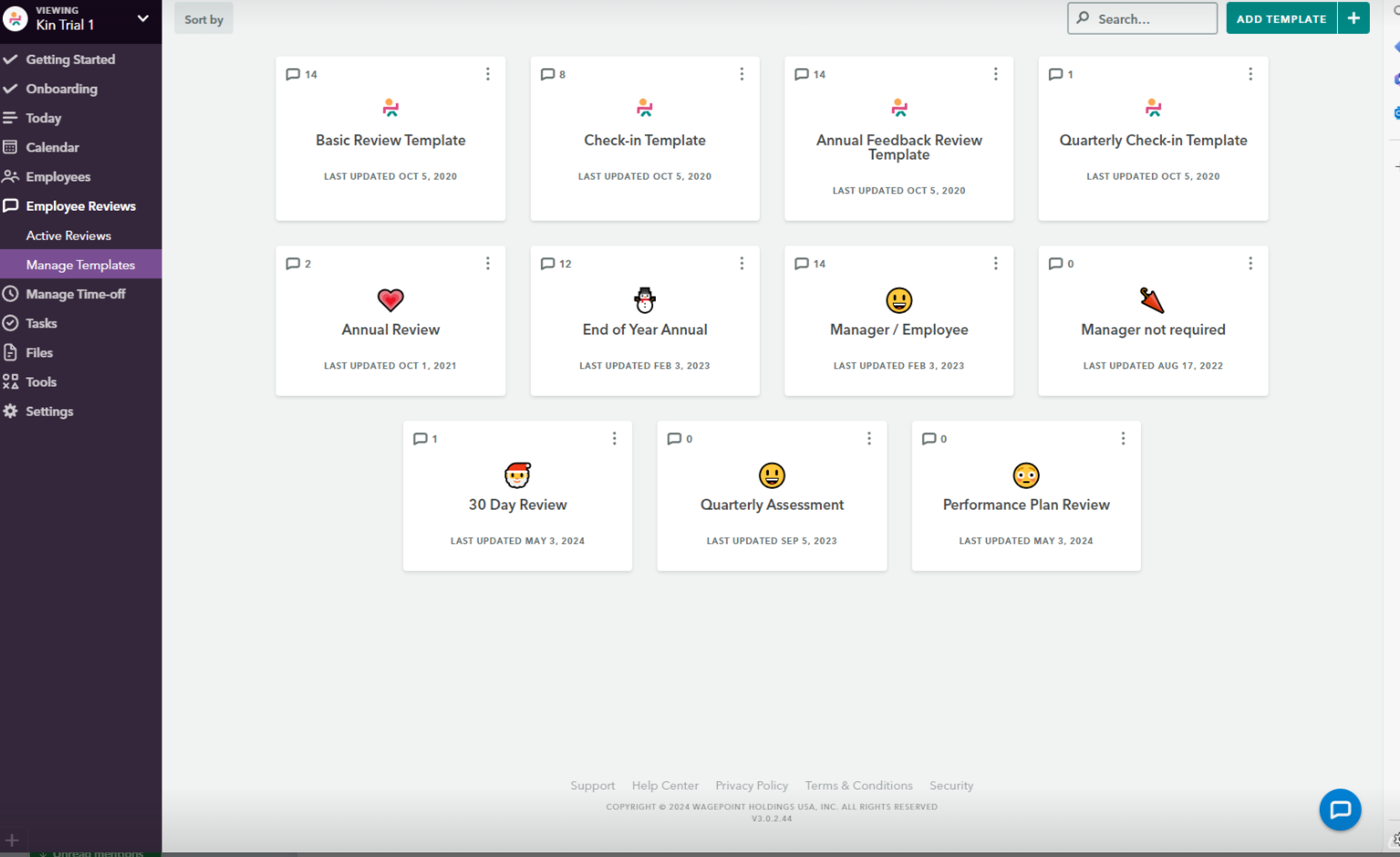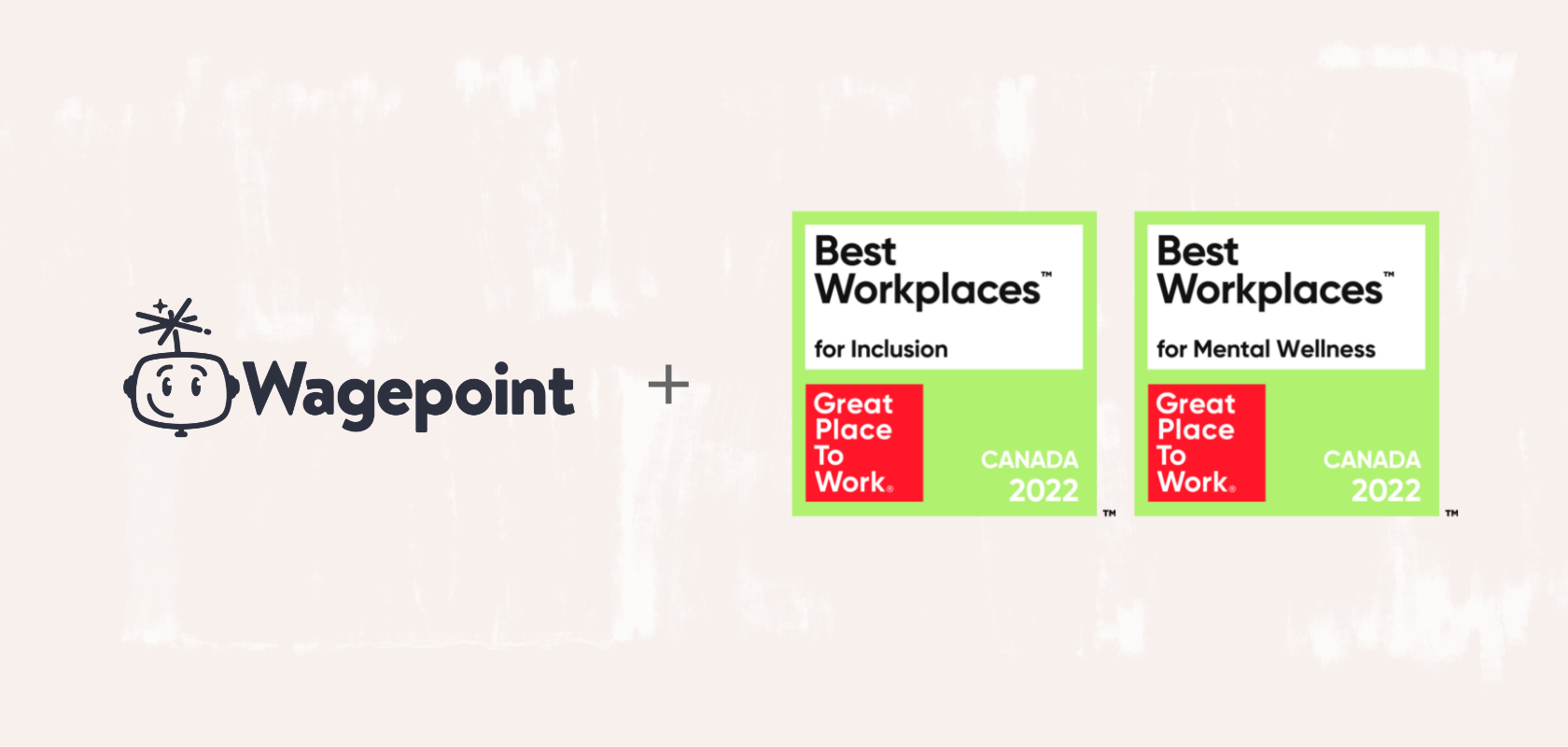Become an insider!
Get our latest payroll and small business articles sent straight to your inbox.
Learning how to track employee performance plays a big part in business success. Without a system for employee performance tracking, you can’t know if your team members are improving, growing into their roles or contributing to your company in a way that directly moves you closer to your business goals.
Regular performance reviews is one of the best ways to make sure that every member of your team is helping you achieve your goals and ensure you’re getting a good return on your investment in their training and man hours.
Key takeaways.
- Tracking employee performance is an essential aspect of workforce management.
- Employee performance tracking keeps employee productivity high and has a positive impact on your business by ensuring all team members have continuous skill development.
- Having a good performance management process also increases job satisfaction making it a win/win for everyone.
- Checking in on employee performance on a regular basis is a great way to keep track of employees’ progress and keep everyone on track.
- Using software like People by Wagepoint simplifies tracking employee performance.
- Learning the best practices and best tools can reduce how much time you spend on managing employees’ performance.
How to track employee performance.
Learning how to track employee performance effectively starts by understanding foundational elements like what even makes a goal effective or productive in the first place. Then there are steps you can take to set up a performance management system (such as a software platform) where you can effectively measure your team members’ growth and skill development.
Set realistic goals and objectives.
Setting New Year’s resolutions is a tradition. An equally important part of this ritual is joking with friends and family over the following two weeks about how quickly they dropped those goals. In fact, by January 14th every year, almost everyone (88%) has already given up on their New Year’s resolutions.
But why is that the case? According to the experts, we’re doing goal setting wrong. Think about the stereotypical New Year’s resolutions: Lose weight, run a marathon, learn a skill, get a degree, start going to the gym, stop smoking, and so on. Those aren’t goals, they’re wishes. They’re too vague and nebulous to take action and/or too big to be realistic or useful.
That’s why it’s so important to use an effective goal-setting framework. There are various options, so you can find one that works best for you and your team members.
SMART Goals
SMART goals are meant to be a solution for the common goal-setting pitfalls. SMART goals must be:
- Specific: Goals need to be specific to be useful. You can’t just say you’re going to learn content marketing without specifying what content marketing skill(s) you’re going to learn or how.
- Measurable: Goals also need to be measurable, otherwise you won’t know when you’ve achieved them. Saying you want to lose weight doesn’t give you any key performance indicators to know when you’re done.
- Achievable: Setting lofty goals has its time and place. It’s great to be ambitious. However, sometimes you can aim too high. Wanting to run a marathon is great. Wanting to run a marathon tomorrow or wanting to beat the marathon record time though… Not so realistic.
- Relevant: Setting employee objectives is meant to help them increase productivity and bring more value to your company. If you ask an employee what goal they want to set and they say they’ve always wanted to learn to juggle, unless they mean juggling projects or customer expectations, that’s going to be a no.
- Time-bound: Having a deadline is vital. Saying you’re going to earn your PhD someday is a wonderful aspiration. As a goal though, someday isn’t really a helpful timeframe.
MASTER Goals
MASTER goals is a SMART goals alternative framework. The intention is to keep what makes SMART goals effective but add some flexibility. MASTER goals need to be:
- Measurable: You need a key performance indicator or another method for measuring progress and knowing where the finish line is.
- Achievable: The goal can be created to be very challenging, but it has to be a realistic possibility.
- Specific: Vague goals don’t adequately focus your attention or make the path forward obvious. Specific goals give you a clear target.
- Transforming: The goal must be designed to create a significant improvement in performance. The idea is that it creates an important change and also inspires and energizes employees to work harder to achieve it.
- Evolving: Things change, business needs change, and circumstances change. If your goals are too rigid and static, when something comes up your goals just become useless, or worse, detrimental.
- Relevant: Your employee objectives need to be both relevant to their position and your business. It’s always best to have your staff members working on things that directly bring your business closer to its goals.
PACT Goals
PACT goals are better for goals that are part of a larger plan. They also focus more on your output, which you control, than results that may not be. PACT goals are:
- Purposeful: A PACT goal should align with purpose or long-term goals. This helps keep team members motivated and creates progress on long-term objectives.
- Actionable: It should be something you can take clear and immediate action on. You control your actions. Focus on that.
- Continuous: As Robert Collier put it, “Success is the sum of small efforts, repeated day-in and day-out.” The most helpful goals often require repetitive efforts. Instead of focusing on your goal weight, you’d focus on things like eating a more balanced diet or exercising every day.
- Trackable: Trackable is not the same as measurable. Measurements focus on key performance indicators while tracking focuses on whether you did the continuous action each day, yes or no.
To synthesize the difference, a SMART goal might be to make 50 sales this month. A PACT goal would be to make 10 sales calls a day this month.
Define measurements of success.
It would be pretty hard to figure out how to track employee performance without any key performance indicators (KPIs), objectives and key results (OKRs) or other measurement or tracking methods. Employee performance tracking kind of depends on it actually. And that’s true both for managers doing the tracking as well as any self-monitoring or self-assessment efforts from your staff. Tracking and measurement is one of the key differences between goals and to-do list tasks.
Measurement or tracking is one of the points in each of the frameworks above for that exact reason. It’s important to be able to see progress. Clear performance goals need an equally clear method of measurement.
For example, if your goal is to make a good number of sales this month, how do you know if you’re on track? How can you tell when you’ve achieved it? If, on the other hand, your goal is to make your first 100 sales this month, that’s something you can measure.
You can also break it down by week and by day to ensure that you’re making enough progress to achieve the goal by the deadline. For this goal, that means 25 sales a week, and five each workday. Having a measure for your employee goals makes employee performance tracking possible and useful.
Review performance and provide feedback regularly.
Measurements are only a key factor in how to track employee performance if you actually review that performance. You can create the most measurable goals of all time, but if you don’t look at the metrics, you can’t know if they’re making progress toward their goal.
Regular meetings one-on-one with each team member can help you keep everyone on track. Employee performance reviews are the perfect time to go over the metrics, see their progress and check in with employees to see how they’re doing. Make sure the goal isn’t too much for them to handle, and provide constructive feedback to keep them on the right path to success.
Many companies just do quarterly or annual performance reviews. This isn’t enough to get the best results. By the time you realize someone isn’t making progress or notice subpar work, it’s already been going on for quite some time.
Regular check-ins and detailed performance evaluations can give you a clear picture of how they’re doing. These regular meetings also give employees an understanding of your expectations, where they’re doing well and where there are areas of improvement. For example, if something is less than ideal or they’re doing the right work, but the outcome isn’t what you intended, you can make any adjustments needed to correct the goal, the employee or the outcome.
Assess development and growth.
Part of a good employee performance management strategy is assessing employee development and growth. Meeting their goals is the minimum expectation. If they couldn’t fulfill the job requirements, they wouldn’t have been hired. However, development and growth over time should naturally occur, especially if you’re setting challenging goals.
There’s a reason businesses value seniority and experience. It’s expected that the longer you’re in a role, the better you get at it. That you’ll become a high-performing employee. That’s also why annual raises are standard at some companies. As the employee’s value increases, so does their pay. If their performance is stagnant, then all the time and money you invest in them will be wasted.
During your performance reviews, assess their skill development and employee productivity. Employee performance tracking lets you see whether they’re growing in their role and getting better at their job. Their performance evaluation should help you figure out if they’re an ambitious go-getter or maybe a case of quiet quitting.
If the employee is clearly capable but isn’t excelling or taking initiative, it could be an issue of job satisfaction. Having regular meetings should facilitate a dialogue. Make it clear that they can be honest about their experience without repercussions because your goal is to have employees who are happy in their roles. That’s when they shine.
Find out if there’s anything you can do to make them more content in their role and do your best to accommodate reasonable requests. Employees often go above and beyond for a job they genuinely like and where they feel valued.
Then, provide honest and constructive feedback that explains your expectations and includes clear goals moving forward. Ideally, your team members and your business can all get what they need from each other.
Focus on learning and relearning.
Learning
Learning and development initiatives can make a big difference in team performance. Depending on the type of company and the role in question, filling a role can cost twice the annual salary that job pays. A systemic review of the impact of learning and development showed that it lowers employee turnover. In fact, one study found that 94% of employees surveyed would stay with an employer who invested in their professional development longer than one who didn’t.
However, even if that wasn’t the case, it would still be a good idea to keep your employees educated on new developments in your industry and give them a better understanding of how best to perform their roles. Or even give them training opportunities to grow into different roles.
Imagine what would have happened if a business refused to train their employees on computers when businesses first made the switch. Their employees would have been ill-equipped to use the new system and learning on their own would have taken too long, leaving the business in the dust of companies moving much faster.
Having better-trained employees makes them better at their jobs, makes the business more agile, helps with employee retention and improves employees’ job satisfaction. It’s a no-brainer. Learning and development is a win/win for everyone.
Relearning
What about relearning? Relearning is about unlearning old and outdated methods and learning how to perform an old skill in a new way. This improves efficiency and streamlines workflows to save you time and money. The better equipped your workers are, the better your business performs. Simple as that.
As much as you value your team members as people, they are technically a business asset. Assets require investment to gain returns. Continuous learning and relearning will increase employee productivity, job satisfaction and performance, providing you with a better return on your investment.
Set up a clear and fair review process.
Transparency, equity and evenhandedness are important features of a good employee performance review. Give your team a clear view of what exactly the process will look like, how long it will take, what factors the performance evaluation will consider and what will happen next.
A mysterious process makes people nervous. A clear, transparent and fair employee performance review makes people motivated to meet their goals and ace their review.
Part of how to track employee performance well, apart from clear performance goals, is outlining performance evaluation criteria and outcomes or next steps. For instance, does the evaluation involve them keeping track beforehand in self-monitoring tools? Is it just them and you as the manager? Does your company use the 360-degree feedback method where feedback comes from multiple sources (including peer reviews)?
Keeping your team in the loop on these things makes them feel empowered to succeed rather than afraid of being called in for a meeting.
If the employee performance review process is clear and well-communicated, employees will know exactly what they have to do and what will happen as a result.
If the process is fair, then your team will feel like they’re in control of the outcome of their performance evaluation. That’s because a fair process would start with clear performance goals that team members are capable of achieving and end with a fair system of evaluation.
Simplify employee performance tracking with software.
Those are all the factors that go into the performance management side of things and the elements needed for it to be productive. What about the actual nuts and bolts of the process? There are various methods for how to track employee performance. You could go with a traditional method like grading sheets.
You know, like those weird green sheets your teachers used to use. There are also notebooks and printables made for tracking things like this. You could even go with a digital version: A spreadsheet. However, a word of warning, programming spreadsheets to do anything can make you want to tear your hair out.
But those are all pretty old-school. If you want something simpler, more seamless and less likely to give you nightmares about little red error triangles, then you might want to choose a solid employee performance tracking software solution. It’ll make the whole thing go more smoothly and save you a lot of time and hassle.
With more time spent on what matters — managing your team and helping them succeed while achieving your company goals — and less time on lengthy and annoying manual employee tracking processes, you can stay focused on building good relationships and maximizing potential.
Try People by Wagepoint for free
People by Wagepoint is a great tool for your employee performance tracking software. However, People by Wagepoint is so much more than just that. It’s a complete employee resource tool, built for small businesses. It makes employee performance tracking easy and helps you keep open lines of communication with your team members. Think:
- Having easy access to employee performance data (including access to past reviews so you can always check back on how your employees have progressed)
- Creating custom review templates to give you valuable insights into the performance of your employees.
- Collaborative objective setting so there are clear expectations.

In addition to performance tracking, it has a lot of other features that can help your small business thrive and eliminate a lot of the repetitive and mundane tasks that just suck the life out of small business owners.
Other People by Wagepoint features (that aren’t add-ons!) include:
- Time management to make requesting, approving and tracking time off easy. (Encourage time off! It boosts productivity and makes employees happier, healthier and more dedicated during work hours!)
- Employee data management and file storage to keep all documents safe, secure and in one place and accessible in real time.
- eSignatures to make the new hire process a breeze and eliminate scanning, signing and scanning again.
- Employee onboarding to get new recruits up to speed and ready to do their best work quickly and easily.
These amazing streamlining features make running your business so much less stressful and tedious. We’ve never heard a single small business owner say they started their business for their love of paperwork and administrative tasks. We bet you haven’t either. So, get People by Wagepoint and get back to the parts of your business that you love!
Try People by Wagepoint free for 14 days.











